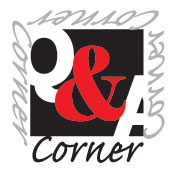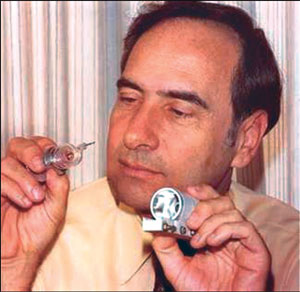|

Science
1. Everything around us is either solid, a liquid or a gas.
True/false?
2. In which year did the English doctor John Mayow prove that fire
consumes air?
|

Hot air balloon |
3. What is the instrument used to measure air pressure?
4. Air pressure changes all the time. It pushes on us from all
directions because of the endless jostling of gas molecules. True/false?
5. Name the two French brothers who discovered that rising hot air could
be captured and used for flight?
6. Who built the first glider to carry a person?
7. Water which has a high percentage of the mineral sodium chloride or
common salt is more buoyant than normal water. True/false?
8. Who first discovered the principles of hydraulics?
9. Water turbines which are harnessed to generators to produce
hydroelectric power were designed based on wooden water wells used in
ancient times. True/false?
10. Who was the British engineer who built the first iron ship to be
driven by a screw propeller?
11. What is a voltage?
12. What is a galvanometer?
13. What is the sound barrier?
14. What did John Dalton discover?
15. What is the speed of light?
16. How much distance does the Earth cover in making one round of the
Sun?
17. What produces the sensation of white light of the Sun?
18. Who first discovered that sunlight is a mixture of seven colours?
19. What is a meridian?
20. Who made the first laser?
[Answers]
1. True.
2. In around 1670.
3. A barometer.
4. True.
5. Joseph and Jacques Montgolfier. They built a huge balloon from linen
and paper and built a fire underneath it. The balloon trapped the hot
air and smoke rising from the fire and lifted the two men into the air.
|

Theodore H. Maiman |
6. An Englishman called Sir George Cayley built it in 1853.
7. True. Salty water is more buoyant (can hold things up) because the
molecules of salt and water are joined tightly together.
8. The principles of hydraulics were discovered by Blaise Pascal in the
17th century.
9. True. They were used since the times of the Roman's have powered
millstones to grind corn.
10. Isambard Kingdom Brunel.
11. A voltage is an electromotive force of supply of electricity which
is measured in volts.
12. An instrument for detecting small electric currents.
13. It is the increased resistance of the air to the passage of an
aeroplane when it achieves the speed of sound, that is 1200 km per hour.
14. He discovered that atoms in the elements are joined together in
definite ratios to form molecules.
15. Light travels in a straight line at the speed of 186,281 miles per
second or 299,792 km per second. It travels the fastest.
16. It covers a distance of 940 million km in making a round of the Sun
in 365 days and 6 hours.
17. Different radiations have different wave lengths called the
electromagnetic spectrum. When all the wave lengths of light of the Sun
are perceived together they produce the sensation of white light.
18. The British Scientist Sir Isaac Newton discovered that sunlight is
really a mixture of the seven colours of the rainbow.
19. It is an imaginary lines that passes through the poles which is used
in marking time zones. The world has been divided into 24 meridians.
20. A US scientist named Theodore H. Maiman in June 1960. |


